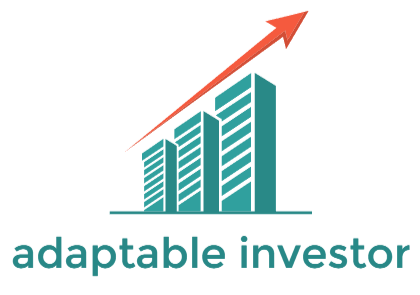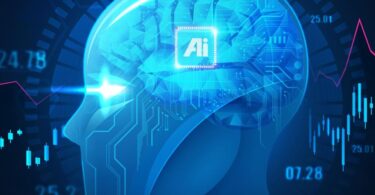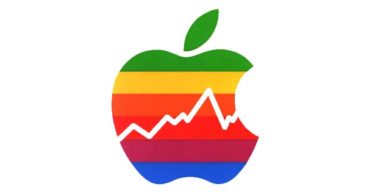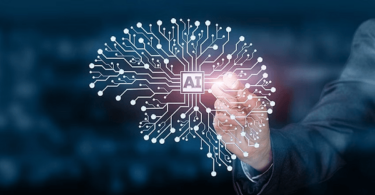Missed Microsoft? Here's Your Second Chance for a 249,000% Payday
Sponsored
Who's going to come out on top in the AI war? A big tech titan like Microsoft and Google… Or another big player with substantial bets on the technology, like International Business Machines (IBM),Nvidia (NVDA), or Advanced Micro Devices (AMD)? NOPE. None of the above! You see, these companies are giants… Their stock prices are already in the stratosphere. Worse still, AI is only a tiny portion of their business. So I plead with you… If you want a shot to get FABULOUSY RICH from the AI war… Even if you invest only $500… $1,000… or $2,500 in this exciting opportunity… Make sure you grab my no. 1 AI reco today. The best way to do it? Click here to view my Free Presentation, and get your hands on the $3 AI Wonder Stock that could make you super-rich (plus a whole lot more)… Don't delay. This is a fast-moving opportunity. WATCH MY VIDEO BULLETIN NOW.
When Hurricane Katrina hit New Orleans, we all heard the horror stories.
One in particular sticks out in my mind:
The graveyards flooded, raising the dead, and sending thousands of coffins floating across the Gulf Coast.
Grim.
In 2020, the FDA had its own Hurricane Katrina: It was called Covid-19.
(Maybe you’ve heard of it.)
That’s when the “invisible graveyard” — once a talking point reserved only for anarchist wackos — floated to the surface, coffins and all.
In other words, it’s when everyone realized how the FDA actually works.
For example, researchers in Seattle wanted to do early COVID testing. The FDA told them to stop.
Why? Their lab wasn’t certified. They didn’t have the proper consent forms.
They, like many labs, scrambled to get emergency approval. They were met with delays, often lasting WEEKS.
In fact, the FDA denied many labs because they applied via email.
According to FDA rules, the application needed to be submitted on paper, by snail mail, along with a COPY ON A COMPACT DISK OR A FLASH DRIVE.
Then, the FDA finally gave emergency dispensation around mid-March.
Some labs started offering at-home tests. The FDA made them stop, saying the emergency declaration didn’t apply to these at-home tests, forcing the companies to stop selling them and destroy their samples.
“Its leaders insist they’re just doing their job,” John Tierney writes in the City Journal, “but that’s precisely the problem. Their job is predicated on the assumption that only the FDA’s experts know enough to protect Americans against shoddy medical treatments and devices.”
It’s a legacy that began in 1962. Long before both health providers and patients gained access to this little thing called the Internet.
Just like the DHS and FEMA, the FDA was caught off guard by the crisis. And then, the FDA made the same mistake:
They expended a great deal of energy and resources controlling and limiting the autonomy of local and state agencies, which led to a complete breakdown in communication and coordination at all levels.
F the DAO
Last week, Balaji Srinivasan came to Vitalia here in Honduras to talk about startup societies and crypto cities.
During his fireside chat, he pitched an idea: a parallel FDA called “FDAO.”
What does FDAO do, you ask?
“It does public reviews of drugs and devices. And citizens, doctors, experts can post them. It’s like Yelp for drugs. It replaces completely the dysfunctional Phase Four surveillance, which the FDA has — some silly form on the FDA website you’re supposed to fill out to report adverse events. But nobody ever does that. They collect almost no data.”
Instead, a decentralized FDA could start collecting that data from around the world, as opposed to just the USA.
This is the third pillar of what Balaji calls “citizen science.”
Taking care of your own health.
Participating in research.
Competing with the FDA on its own turf.
The idea: Turn passive patients into active participants in their own health, then leverage that data to make everyone smarter.
Zooming out, this strikes at the core of the Decentralized Science (DeSci) movement.
Fake Science!
“Even though it gets less publicity,” Balaji said, “fake science is as important as fake news.”
As you know…
The principle of independent replication stands as the cornerstone of science.
It's a concept so fundamental that it transcends the need for advanced degrees or formal education, as shown by pioneers like Michael Faraday, who, without the aid of equations or formal training, made groundbreaking contributions to the field of electromagnetism.
When Galileo made his work accessible not just to scientists, but also the average onlooker, he helped to usher in an age where discovery was open to all, regardless of educational background or credentials.
Unfortunately, institutional science has come to put a bigger emphasis on prestigious citation over independent replication.
“People are using citation as a proxy for truth,” said Balaji. “And they say that something published in Nature is science — but it’s not. It’s just something that came out of Nature.”
One big thing we lack in science is the ability to track the reliability and integrity of scientific data.
Enter blockchain.
Balaji:
“Fundamentally, what you can do is say, ‘At least every data set should be public and on-chain.’ If it’s on-chain, it can’t be corrupted or deleted.”
If it’s on-chain, anyone can track the data all the way back to the source. For example, let’s say someone doubts whether a vaccine works.
With a “supply chain of data,” anyone can audit the data trail and get at least a good record of the vaccine’s production and usage.
Even better…
Using blockchain, you can begin to develop new and more dynamic funding mechanisms for experiments and projects outside of the traditional medical paradigm.
Funding the New Paradigm
Various decentralized science (DeSci) platforms, including VitaDAO, MoleculeDAO, and BioXYZ, are revolutionizing academia's funding models by providing stable, long-term funding, freeing scientists from the constant grant chase.
Simultaneously, platforms like DeSciLabs and OpScientia are redefining research design by prioritizing rigorous methodology through decentralized reputation systems.
Initiatives like LabDAO and ScholarOrg leverage blockchain technology to address the replication crisis, enabling decentralized data sharing and anonymized peer review.
Meanwhile, tokenized incentive models on platforms like ResearchHub and TLDR aim to democratize peer review, enhancing transparency and inclusivity.
Finally, decentralized storage solutions like IPFS, paired with crypto-enabled micropayments, are dismantling paywalls, ensuring open access to scientific knowledge for all.
Here’s an example of how it would work.
How it Works
Let’s use the example of VitaDAO.
VitaDAO has its own token (VITA) which anyone can buy on crypto markets.
Through a blockchain-based voting mechanism, holders of VITA get to help choose what research the DAO supports. They can also contribute to governance decisions in the DAO.
(And if you’re working on a project, you can pitch it to the DAO and potentially receive funding.)
As a VITA holder, you have the choice to signal long-term confidence in individual projects. You do so by staking your VITA tokens for a set period until the project reaches a particular milestone.
When a funded project reaches a milestone, staked tokens unlock. In return for locking tokens, VitaDAO pays out rewards to stakers.
VitaDAO holders will also benefit from IP rights in the research projects. Using the IP NFT framework (invented by MoleculeDAO), VitaDAO will maintain a portfolio of IP assets.
Sensitive data is obfuscated by the NFT and available only to the owner of the IP NFT. Data can be made accessible to other users through digital rights frameworks.
These IP NFTs will enable VitaDAO to file for patents, monetize the IP, and contract researchers to use the IP and grow its value.
If these data assets are promising, a biotech or pharmaceutical company may want to buy it.
In that case, members of VitaDAO will decide how to distribute the income generated by these assets.
That’s just scratching the surface.
The Nvidia Killer is Here
Sponsored
Artificial intelligence could have already made you a millionaire… Because back in 2013, researchers from Stanford University built the “world's largest virtual brain” with Nvidia chips. This single event marked the beginning of the chipmaker's reign as the “King of AI.” You could've raked in 12,035% gains had you bought Nvidia shares when this story became public. That's enough to turn a $9,000 stake into more than $1 million. But there's no reason to beat yourself up for missing out on this life-changing opportunity. Today you have a second shot at six- or even seven-figure gains. Because there's a new player in town… One that's set to dethrone Nvidia. This off-the-radar company from California is about to release an AI chip that's superior to Nvidia's technology. I'm talking about a 100x performance boost. Access to this kind of chip is still highly restricted. The U.S. Air Force is one elite client that was allowed to use it early. But soon it will be available to the mainstream. And if you position yourself BEFORE this chip reaches the mass market, you could turn every $1 into $120… Just like early Nvidia investors did. I just published a brand-new presentation on this unique opportunity. Access is instant and free. Get the full story here while there's still time.






